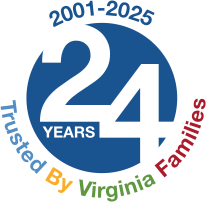Bicyclists and pedestrians experience unique safety challenges. They lack protection in a crash, travel slower than motor vehicles, and are hard for drivers to see – particularly by truck and bus drivers. The following tips will help bicyclists and pedestrians make a plan for sharing our roads safely.
1. Avoid Lingering in Blind Spots
Large vehicles have huge blind spots, making it difficult for drivers to see bicyclists and pedestrians. Avoid riding or walking behind a truck or bus that is backing up; drivers often cannot see directly behind their vehicle.
2. Prepare for Wide Turns
Trucks and buses don’t maneuver as easily as smaller vehicles and need to make wide, careful turns. If a large vehicle is stopped at an intersection or about to turn right, wait for them to turn before continuing your journey and step back from the curb to be safe.
3. Be Aware of Long Stopping Distances
Large trucks and buses need the length of up to two football fields to safely stop. Bicyclists should avoid merging closely in front of a moving truck or bus.
4. Make Yourself Visible
In the daytime, bright clothing is best for visibility. At night or during bad weather, use reflectors and lights on your bike, and carry a flashlight and/or wear a headlight while walking.
5. Obey Traffic Laws, Signals, and Signs
Bicyclists must stop at red lights and stop signs and should ride with the flow of traffic. Pedestrians should obey signals and cross at intersections and crosswalks.
6. Stay Alert and Undistracted
Using headphones can leave a bicyclist or pedestrian unable to hear sirens, horns, and other warnings. Stop walking while actively using a device. When in motion, make sure your device is away and pay attention to safety.
7. Avoid Riding or Walking Impaired
Alcohol decreases motor skills and judgment whether you’re driving, on a bike, or walking. If you’ve been drinking, get a safe ride or take public transportation.
More Safety Tips for Bicyclists
1. Wear Your Helmet
Always wear a well-fitting, properly adjusted helmet when riding – riding into a truck or bus is equivalent to hitting a steel wall.
2. Stay Aware of Traffic
Always be aware of the traffic around you, especially when riding near large trucks and buses. Watch for brake lights and signals. Signal well in advance, but never assume that drivers see your hand signals. Always ride defensively.
3. Check Your Brakes
Always check your brakes before riding. You must be ready to stop quickly – never assume a truck or bus will be able to stop fast enough.
More Safety Tips for Pedestrians
1. Watch Your Walkways
Walk on sidewalks and in crosswalks whenever possible. Pay attention to walk signals. Never stand in the street while waiting to cross. Keep a safe distance back on corners as turning trucks and buses occasionally run up onto sidewalk corners.
2. Be Extra Alert in Parking Lots, Filling Stations and Rest Stops
Locations where trucks must back up and navigate tight spaces can be particularly dangerous. Stay out of the way (and out of blind spots).
3. Take Extra Care at Bus Stops
Before crossing in front of a stopped bus, make sure the bus is not about to proceed, and that the driver sees you.
4. Watch for Wide Loads
Trucks with wide loads have especially limited visibility and difficulty maneuvering. They make even wider right turns, require more space, and take even longer to stop. Keep your distance when walking around trucks carrying wide loads.
